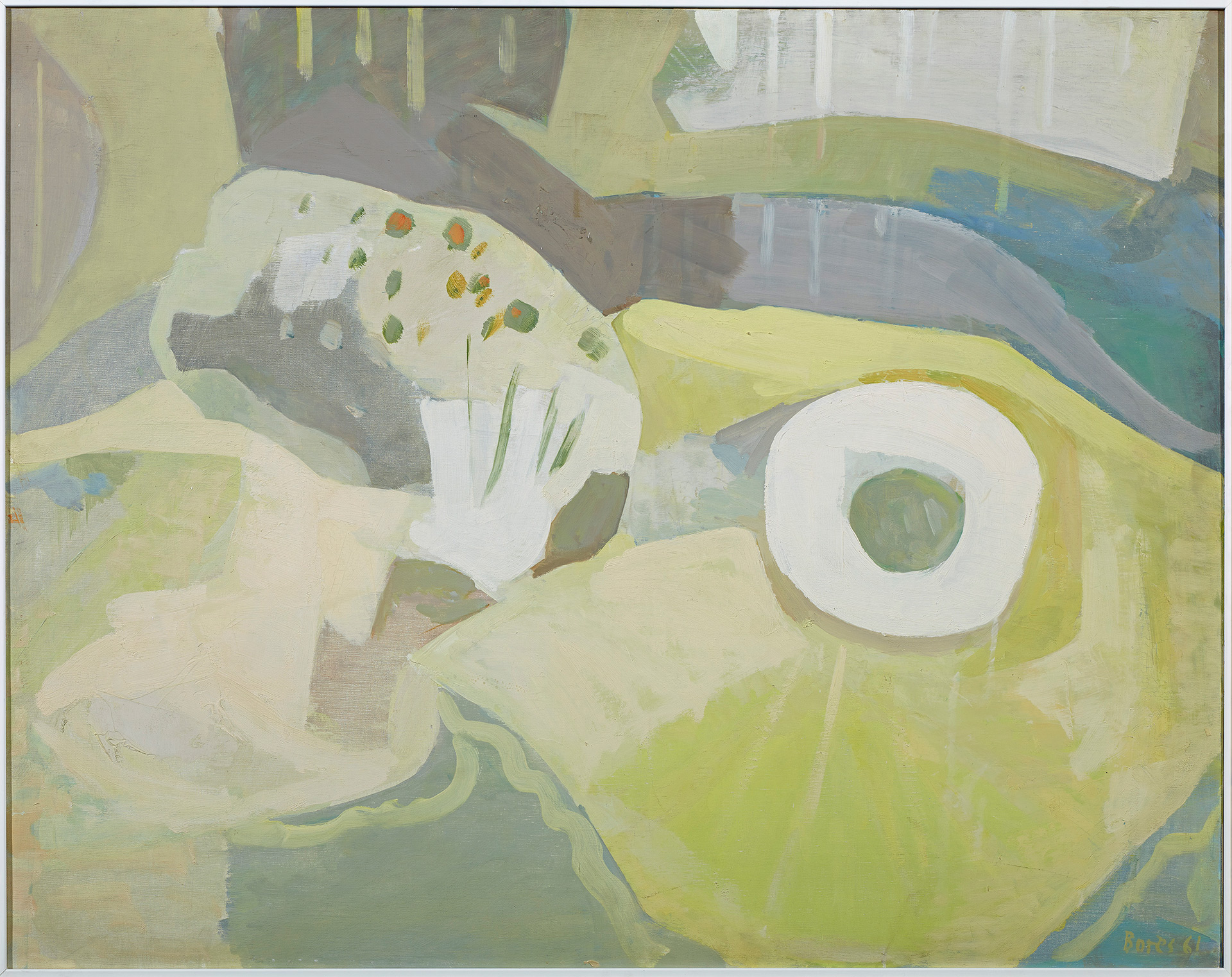
Francisco Bores (Madrid, 1898 – Paris, 1972)
Wildflowers
1961
WORK INFORMATION
Oil on canvas, 73 x 92 cm
OTHER INFORMATION
Signed and dated in the lower right-hand corner: "Bores 61" Inscription on the reverse: "Fleurs des champs"
Francisco Bores trained in his native Madrid at the studio of Cecilio Pla, where he met a number of fellow artists including the Cantabrian Pancho Cossío. Bores and Cossío were reunited in Paris in the late 1920s, where they became the most prominent exponents of the Spanish school of lyrical figuration, vehemently defended by the critic of Greek origin E. Tériade in the pages of Cahiers d'Art as a means of overcoming the stale decorative decadence of the Cubist legacy. Years later, Bores himself—who, of the two painters, had a more solid theoretical capability—would define that push for "a new Fauvism" in these terms: "I proceed as if I were going to make an abstract painting, which at a certain moment I metamorphose to insert allusions to the real. I do not move from reality to abstraction; on the contrary, the pictorial elements of my compositions, volumes, blotches, etc., are transformed into heads, pieces of fruit..."
As the decades passed, Bores's creative work remained essentially true to that lyrical primacy of the plastic impulse, which nevertheless continued to evoke the objective world, even as that evocation grew increasingly evanescent in his mature periods. Still lifes and interior scenes were the signature themes of the mature Bores's painting, and these two motifs are represented by the two canvases in the Banco Santander Collection, the second of which, Femme cuisinant [Woman Cooking], was painted barely a year before the Madrid-born painter's death.
Both works correspond to an advanced stage of the "white style" attributed to the evolution of the artist's pictorial syntax in the second half of the 20th century. For Bores, that white style was motivated by a desire for greater clarity that led to an emphatic thinning of the figure, a way of arriving at abstraction by purely figurative means. This is perfectly patent in both Fleurs des champs [Wildflowers] and Woman Cooking, where the stems and buds of the flowers or the bowl on the table, like the body of the woman labouring beside the oil lamp, are little more than ghostly traces in the pure epiphany of the effusive transparency of colour. Bores claimed that this path, discovered at the end of his life, completed the circle of all his searching: "I have returned to my early attempt to create a plastic synthesis of truth." [Fernando Huici March]

